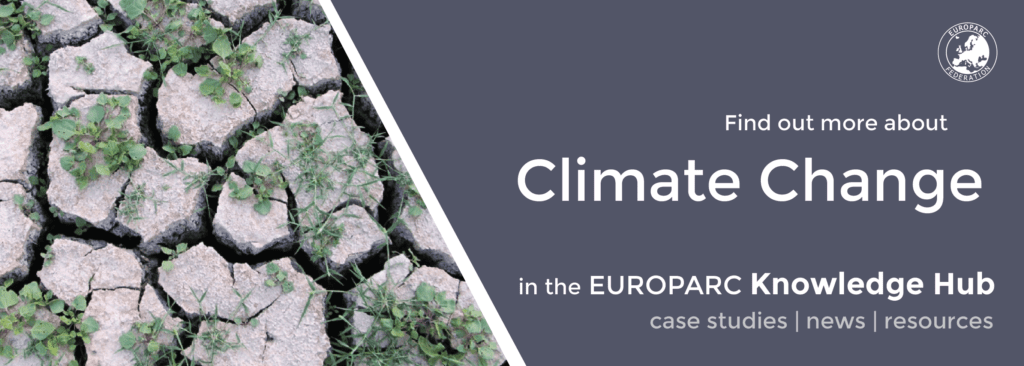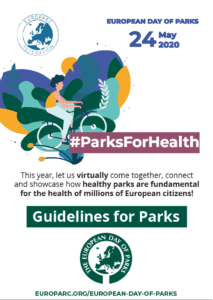Celebrating 50 Years of Earth Day
The president of the EUROPARC Federation calls for people to listen to our natural heritage – not stock market listings.
Article issued by Ignace Schops,
Today we celebrate 50 years of Earth Day.
It seems like there is not a lot to celebrate, or is there?
The Coronavirus has obliged us to look at the wider picture of how our society functions. Our politicians have relied on scientific knowledge and recommendations to solve this crisis. The draconian measures deemed impossible until recently, have become a reality today. The impossible suddenly becomes possible.
Can we count on similar leadership and the same methods for saving Mother Earth and ourselves? Because we’ve made a mess of things over the last 50 years! With currently 7.8 billion people, the world’s population has doubled, the cultivated area on a global scale has increased by 22 million hectares, 230 million hectares of grassland have been added for cattle, and on top of that, an additional 160 million hectares for arable land.
All this extra space has been taken from our natural heritage.
We have been blind to the collapsing natural ecosystems that keeps our climate stable and provides us with healthy air and drinkable water. We did not listen to the deafening last words of so many life forms on earth. There has certainly been no stock market listing, nor value for a share of nature.
There are consequences arising from our actions. One example. In many parts of Europe we have experienced weather conditions like it was already summer: warm and almost no rain! Despite a drenched spring, the groundwater reserves are dwindling like snow in the sun. Without rain and with high temperatures, the drought increases at an infernal rate. Because of the dehydration, the soil has become concrete in many places where a bird’s beak can’t get through and where toads and frogs croak no more. Farmers already have to pump a huge amount of water, just to keep the crops alive, which only aggravates the situation.
The consequences of an overpopulated world are overwhelming. Each person on this planet now emits on average 21% more CO2 than 50 years ago and we all emit 47% more! These are the averages, but you need to know that only 10% of the world’s population is responsible for 50% of emissions. Per capita, we use 47 times more fossil fuels, consume 65% more meat, produce 447% more plastic and our air travel has increased by 561%! Extreme weather conditions such as hurricanes, floods and extreme drought increased by 44% between 1980 and 2018.
So it would seem, there is no good news at all to report.
But there is.
The reset, the necessary sustainable transformation is slowly underway.
The average number of births per woman dropped from 4.5 in 1970 to 2.2 now and 86% of the world’s population now has access to basic education. The volume of solar energy has increased 400 times, 3.2 million square kilometers of forests have been restored and 27 million square kilometers of marine nature have been protected.
But we are not there yet!
If we don’t halve the CO2 emissions in the next decade and prevent the collapse of natural ecosystems, things will go wrong for our society.
We need everyone now to turn the tide. Let us learn from these past 50 years and celebrate our hope and ambition for a new future.
Ignace Schops
President of the EUROPARC Federation
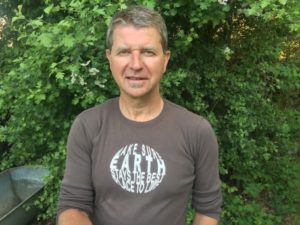
[webinar] Climate Change in Protected Areas: Strengths, Weaknesses, Opportunities and Threats
Climate is changing. Shouldn’t nature conservation adapt and rise to the challenge? This is the second episode of a webinar series on climate change adaptation and protected area management that aims to help protected area managers answer this question.
Strengths, Weaknesses, Opportunities and Threats: understanding the situation of nature conservation and European protected areas in a changing climate
- 28 of April 2020
- 10:00 CET (Central Europe Time)
- Registration is needed (webinar it’s open and free 🙂 ) https://webinarclimatechangeswot.gr8.com/
You might have seen a SWOT analysis applied in many contexts, but have you seen it applied to climate change? On the 28th of April, we invite you to look at the Strengths, Weaknesses, Opportunities and Threats of European Protected Areas in a changing climate.
In this second episode of our Webinar series on climate change (see the results of the first webinar here) you will hear the outcomes of the recent work done by the EUROPARC Climate Change Task Force, a key component of the LIFE Natur’Adapt project. Besides sharing best practice, the expert group is developing tools for Protected Area managers to support their efforts of conserving Nature in Europe by improving their interactions (and collaborations) with political decision-makers and governing bodies.
Programme:
1) Introduction and Outcomes of the Digital Siggen Seminar, by Olivier de Sadeleer, EUROPARC Federation, Belgium
2) Why a SWOT analysis? Elements of context, by Anne-Cerise Tissot, Réserve Naturelles de France, France
3) Understanding the Strengths and Weaknesses of European nature conservation and protected areas in the face of climate change, by Stewart Pritchard, Scottish Natural Heritage, Scotland, UK
4) Understanding the Opportunities and Threats to European nature conservation and protected areas in the face of climate change, by Myrthe Fonck, Puur Water and Natuur, The Netherlands
About NaturAdapt
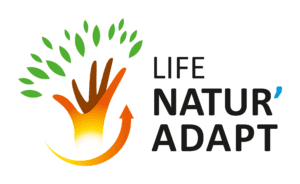
In Europe, Réserves Naturelles de France, EUROPARC and eight partners have joined forces under a LIFE Climate Action project to turn the climate change adaptation challenge into an opportunity to innovate for nature conservation. NaturAdapt aims to initiate a transition towards adaptive management of protected areas while laying the foundation for a dynamic collective learning process.
If you wish to know more about the project, a brief description is available here.
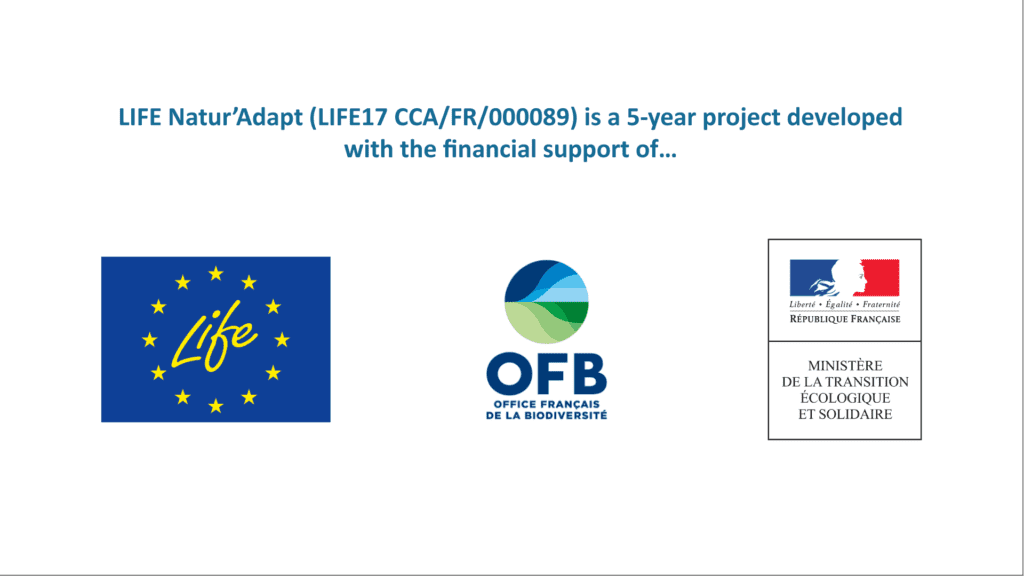
Find more resources on climate change
Webinar [in Spanish] Creando Alianzas con la Carta Europea de Turismo Sostenible
Creando alianzas en Territorios Natura 2000 con la Carta Europea de Turismo Sostenible
- Martes, 28 Abril 2020
- 13:00 CET
- participación es gratuita pero es necesário registrarse. Regístrese aquí: https://webinariocreandoalianzascets.gr8.com/
La gestión eficaz de los espacios naturales protegidos y los sitios Natura 2000 requieren de la participación activa de la comunidad local. Esto incluye no sólo a las autoridades de gestión, sino también a las ONG, las empresas y la población local en general. La creación de alianzas a nivel local y la garantía de apoyo mutuo es una prioridad fundamental para el éxito de cualquier proyecto de conservación.
Por consiguiente, ¿cómo pueden las áreas protegidas hacer participar a los interesados locales y qué estrategias y técnicas pueden utilizarse?
En este seminario web escucharemos cómo la Carta Europea de Turismo Sostenible (CETS) puede impulsar la cooperación y la participación a nivel local.
Javier Gómez-Limón, de la Oficina técnica de EUROPARC España, presentará la metodología CETS y dará una visión general de su aplicación en las áreas protegidas españolas. Por su parte, Cati Carrillo Sánchez, de la Región de Murcia, compartirá con nosotros su experiencia de primera mano en la aplicación de la Metodología de la Carta en el Parque Regional Sierra Espuña. Cati compartirá las herramientas y técnicas utilizadas para dirigir las sesiones participativas y aumentar el compromiso.
Ponentes invitados
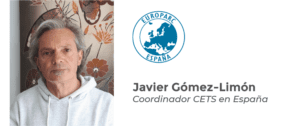
Javier Gómez-Limón García es doctor en Ciencias Biológicas por la Universidad Autónoma de Madrid (1996). Ha dirigido diversos proyectos técnicos y de investigación sobre planificación, uso público y turismo en espacios naturales protegidos. En la actualidad desarrolla su principal labor profesional en EUROPARC-España, donde es responsable del área de uso público y turismo sostenible en espacios naturales protegidos y, coordinador del proyecto de la Carta Europea de Turismo Sostenible (CETS).
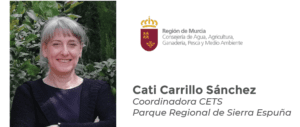
Esta será una experiencia interactiva, por lo que podrá conectarse con su cámara y su micrófono y compartir su experiencia y sus preguntas en el debate final. La participación en el seminario web es gratuita, pero es necesario registrarse. Por favor, regístrese aquí: https://webinariocreandoalianzascets.gr8.com/
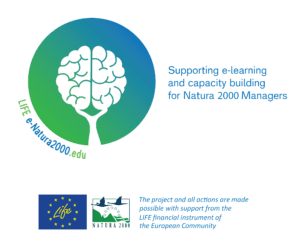
Este webinar es una actividad del proyecto Life e-Natura2000.edu, un proyecto de capacitación para gestores de Natura 2000, liderado en España por FUNGOBE y EUROPARC España, y coordinado por la Federación EUROPARC.
European Day of Parks goes online #ParksForHealth
The European Day of Parks is a commemorative day for Protected Areas across Europe that was launched in 1999 by the EUROPARC Federation to celebrate Protected Areas throughout Europe. It celebrates the creation of the 1st National Parks in Europe – a set of nine parks created in Sweden in 1909.
2020: Special Online Edition #ParksForHealth
When the EUROPARC Federation decided last year that ‘Healthy Parks, Healthy People’ would be the theme for the European Day of Parks in 2020, we would have never thought it would be this relevant. What we did know however, is that positive contact with nature is important for human health. It can create well-being, prevent public health problems and promote an active lifestyle.
Parks & protected areas have an important mission connecting people with nature! Parks not only protect our valuable natural resources – they deliver positive health outcomes. Contact with nature is essential for human health, and in an ever-more urbanised Europe, we must create more opportunities for citizens to connect and explore the outdoors… Positive contact with nature is proved to create well-being and promote active lifestyles!
In 2020, the European Days of Parks will highlight the connection of nature and human health… Healthy People need Healthy Parks! Due to the special situation Europeans are currently living in, the European Day of Parks goes ONLINE! Organising events on site will prove difficult this year, however, we can still excite, inform and remind people of the value of their parks in a digital format. For this occasion we created the hashtag #ParksForHealth.
Click on the image to open our guidelines for parks.
Join us!
Let us showcase how important our natural heritage is for our health AND the health of our planet. Using the hashtag #ParksForHealth, get the word out through your social media channels and your park’s homepage on how essential healthy parks are. Use the social media platforms you have – Facebook, Instagram, Twitter, Youtube – and add #ParksForhealth in all your posts. Start today! The EUROPARC Federation will make a compilation of all posts with #ParksForHealth to send a message to the world on the 24th of May. Download the Guidelines for Parks to give you inspiration for your posts and activities.
You might organise activities such as
- online nature walks & guided tours
- sports activities (like an online yoga class)
- online education activities for children (involving the local schools!)
- online conferences & workshops
But remember: this year health must be at the heart of your events!
Of course, we must urge people to stay at home for the time being! However, Europe’s parks are still “working” for our communities, generating fresh air, clean water, a refuge for nature, and they will be there for people again to recover and restore after the confinement. This European Day of Parks we need more than ever to show the real value of our parks across Europe, for people and for nature!
The EUROPARC Federation will create a video with footage, sounds and pictures from all parks throughout Europe, highlighting Europe’s amazing natural heritage. For this we need your help!
Send us footage from your park, from birdcalls to wildlife pictures and videos that showcase just how special these places are. We will create a ‘tour through Europe’ and release it on the 24th of May. Send your footage with the park name and credit info to communications@europarc.org
